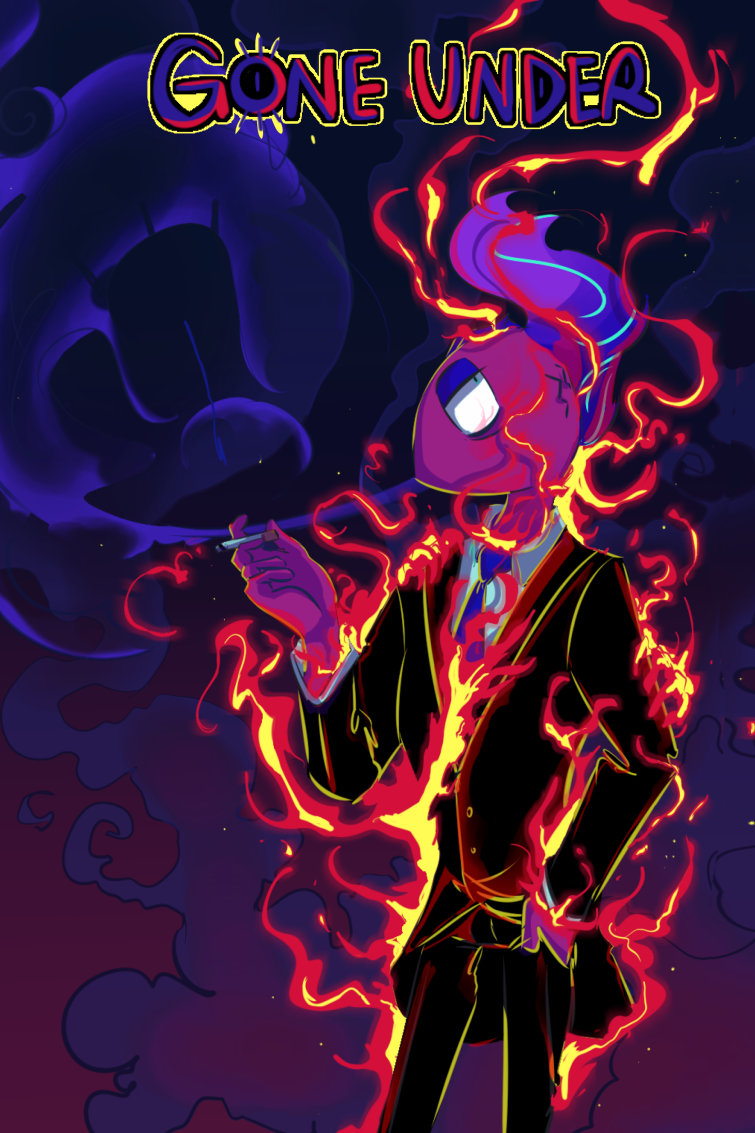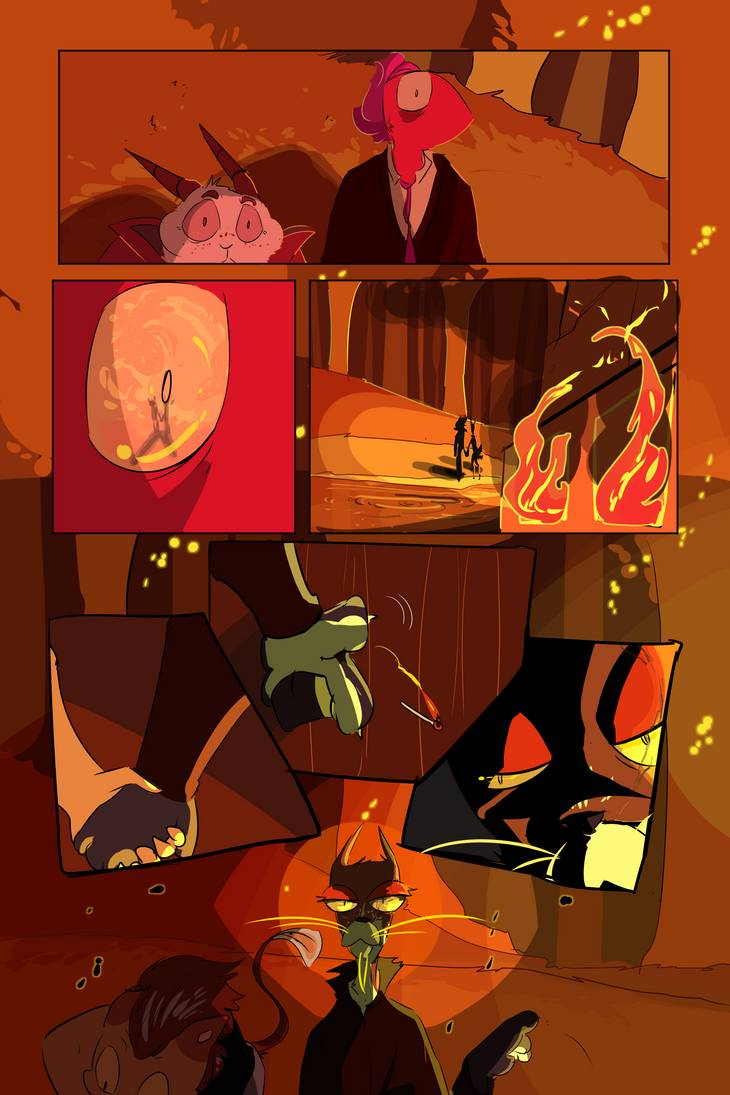How to Start a Webcomic: A Guide
Guest Writer: ThePurpleGriffin / Jan Vasquez
Note: This article was written to benefit from the Discount Deal.
Part 5: Have Fun With It. No, Really
It’s a bit misleading for me to call this “Step Five”, because this concept should apply to all the aspects of webcomic-making that I mentioned so far. But, since it is most important, I shall end with it.
I can’t stress this enough; have fun with your project! Making a webcomic should not feel like a chore. No matter how far you get, you will have those days where you feel frustrated, tired, and even on the verge of cancelling your work. If it gets to a point where you do feel like quitting, then stop, breathe, think, and again... ask yourself questions. Do you need a break? Are you trying to be a perfectionist? Why? How can you fix it?
Yes, I believe that it is good to try your absolute best and challenge yourself to improve your craft as you go along. But at the same time, try not to be too hard on yourself if you can’t get something right. Your audience is not looking to point out flaws in your art and storytelling; chances are, they are also artists who know what it’s like to have that struggle.
Your comic should have stories and characters that you’re dying to show to the world. If you absolutely hate working on your webcomic, then oh boy- you’re certainly not going to have a good time (and neither will your audience). One way to stay passionate about your work is to, well, share your thoughts on it! Make character references and species sheets. Share new and old concept art and explain any ideas that you decided to drop, keep, or change. Tell us about new characters as well as old ones, and explain a bit about the environments they live in. Keep at it, and your webcomic world will feel more grand and alive to both you and your following.
I recently had the chance to discuss this topic with webcomic creator Galaxygale on DeviantART, who is working on a project called Gone Under. The story, which takes place in a colourful world inhabited by anthropomorphic fish, is about a washed-up detective and his best friend trying to solving a difficult murder case:
Galaxygale also runs a Gone Under blog on Twitter, sharing concept art and information about the characters and lore. When I asked how they spread the comic around and keep their audience engaged, they told me, “I post it on a few different sites, including Comicfury, Tapastic, and DeviantArt! I also try to promote it the best I can on my social media, but webcomics are very niche by nature, I've found. I think the best way to really share your comic is just to never stop talking about it, haha! Eventually, your audience will want to know what you're going on about, and they just might start reading!”
As you can see, social media is the key to bringing your webcomic to life. Don’t just post your comics in one place; try to branch out and cross-post on a few sites to extend your reach. If your social media presence feels a bit slow (and trust me, it will because of algorithms, spam, and competition), then you will have to take initiative; find other artists, share their work, and chances are, you’ll form a close bond with others that have the same interests as you. But please, be careful. Don’t allow social media to dictate your comic’s worth or let you spiral into an obsession with numbers and likes.
You’re making a webcomic for fun and not for fame- if you persevere, then more people will find your work eventually. Even a few readers is better than none.
Yes, it takes patience and humility, but keep going! Enjoy the process, and you will be rewarded.
Some Final Remarks
Now, before I go, I’ll share some extra hints and tips from all the artists that I interviewed. Here they are, in all their glory:
7greenTears:
“Plan it out. It doesn't matter how small or big the comic is- plan it out. In your mind, on paper, in a document. Plan out the script, plan out the scenes, make sure you're consistent. Have a basic general level of backgrounds: 1 point, 2 point, and 3 point perspective. This will REALLY help you out with drawing backgrounds, so your panels don't feel so stale and bland. Read comic books. Either go to a book store, find an online copy, or use Webtoons and such. Reading professional and online comics will give your mind material to work with and build on its knowledge of how comics work and how you'll improve them. Don’t be afraid to change things. If you feel like it's for the better, DO IT. Watch film and movie analyses; I do this a lot because to me, comics are like a type of book-movie; the panels are your screens you can look into, as it pans around and evokes emotion and movement. So, watch videos on how to shoot a film and how framing works. The way colours in a movie can influence the viewer can really help.”
Scarlletepix369:
“Keep the art simple and within your skills. Just do whatever you can draw quickly and without suffering immensely, and don’t get caught up with tons of minor background details. Sometimes, you just gotta favor speed and simplicity. Just don’t sacrifice the quality as a whole, though. Just have fun with your comic, have it be something you want to read, and make it something you want to keep coming back to instead of having it feel like a chore.”
C-E-Smith:
“HAVE A PLAN.”
Itchymoto:
“The best advice I could give is to take little breaks from it occasionally to work on other things, to avoid getting burned out, and also to re-read the comic from time to time to remind yourself of why you started it in the first place. Think of how much fun you’ve had working on it, and of course, make sure to take breaks now and then to avoid wrist pain and eye strain!”
Galaxygale:
“Mostly? All I can say is, remember to enjoy yourself! Have fun! Making a webcomic can be a thankless job, so above all, your biggest fan will usually be yourself. So, do whatever makes you happy! It's going to be a labor of love, so please don't forget the love.”
Notice how while each piece of advice was similar to the others, each experience was different and unique. Thus, this is exactly what I want to end with. Never forget that every artist’s journey is distinct. We all learn at a different pace, and accelerate at various points. There will always be another artist who is ahead of you in terms of skills and productivity. On the other hand, in some respects, you are quite ahead of someone else whether you know it or not.
So, to conclude, making a webcomic is about planning and learning, but also about loving and enjoying. The key to starting the metaphorical stubborn car is to find a balance between these elements.
I hope all you aspiring cartoonists out there take something away from this guide, be it a different attitude or new drawing strategy. If not, though, then I hope that you at least enjoyed looking at the visuals, and found a new webcomic to read in your spare time. If you need more information about the comic-making process, or have any specific questions regarding cartoons, films, and the like, my socials are listed below. I’m open to chat so long as you’re respectful and honest. Good luck, have fun, and keep going, guys!
~TPG
Credits
Gone Under by Galaxygale
The Graveyard Quartet and the Crowned Corvids and blog post wording by ThePurpleGriffin. See her TGQ:CC gallery or check out her official Instagram
Title image by ThePurpleGriffin and used with her kind permission.




